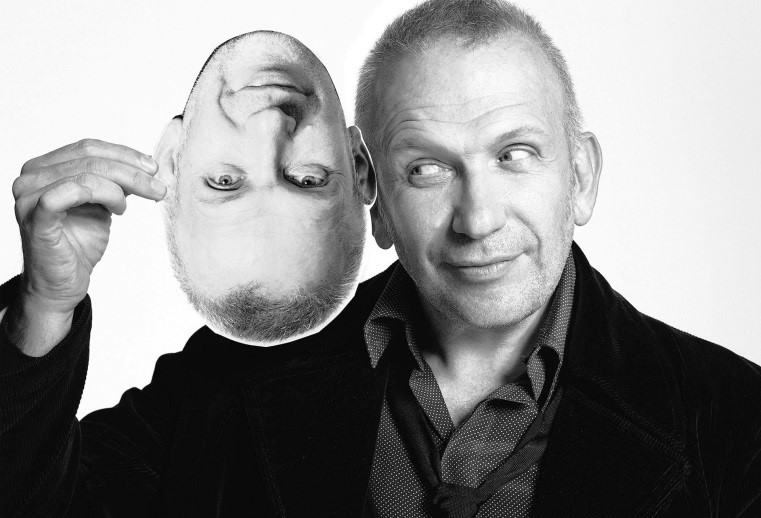ABC Colloquia 2017

Aesthetic identity playing, on Jean Paul Gaultiers Bridal Dress; on fashion as it emerges
ABC Colloquium with assistant Professors Maja Korica, Warwick Business School and Yoann Bazin, ISTEC Paris
Date: November 9
Time: 15-17
Place: Stockholm School of Economics, Bonnier Room Sveavägen 65 floor 6
Based on micro study of Jean-Paul Gaultiers’ Bride Dress, during the preparation for the 2010 autumn/winter collection we try to revisit the making of aesthetic identity. A number of authors, from Chia (1996) to Gioia and Patvardhan (2012), argued that rather than being fixed, organizational identities are always in flux, with change, not stability.
So, identity is in flow and hardly a matter of stereotypes and set standards. So how do one research Field of Flow? By using Loic Prigent’s (2010) ‘The day before’ documentary we explore analytically how constant flows of creativity unfold to temporally accomplish an identity, via coordination practices through which joint sense and aesthetic judgements are negotiated.
What our account has highlighted is the temporal elements, the fluid pasts, presents and futures, which come to matter in that field of what Jean-Paul Gaultier may become, and the material expression of such resolutions, alongside relational processes of aesthetic judgement. Far from being fluffy, fuzzy and ephemeral the worlds of fashion constitute a great accessible show-room laboratory for studying the making of art and identities as something concrete and material.
Dr Korica is involved in the process philosophy organizational research with professor Tsoukas at Warwick and Dr Bazin is the founder of the French society for Philosophy and Business and the editor in chief of the Society and Business Review. In addition they both are engaged in furthering tutorial pedagogy in business school to augment intellectual challenges for business students.
The sublime state: aesthetic protocols of international commercial and political security
ABC Colloquium with Professor Anna Leander; University of Geneva
Date: October 26
Time: 15-17
Place: Stockholm School of Economics, Bonnier Room Sveavägen 65 floor 6
What is the place of Art and Aesthetics in political challenges of international security politics in states of fear, terror and major risk? The goal, as Nietzsche once put it, must be not to displace our fear of sublime monsters with the superficial yet distracting beauty of fairy tales, but to “redeem” and “transform” our “monsters and enigmas” through a profoundly political engagement with the sublime.
Daniel Bereset’s The Broken Chair in the courtyard of United Nations Office at Geneva (UNOG) was made for Handicap International, to protest the use of landmines, cluster munitions and – later – all the consequences of war for civilians. The chair stands “in delicate balance on three legs – the fourth having been violently blown off as if by an explosive charge. A way of showing that even mutilated, victims of war violence are still standing tall, with dignity”. In designing it, Bereset was recognizing that “there is nothing more powerful in art than the anecdotal” and avoided images of violence that would avert the gazes and have a numbing effect. His art work was questioning though not choking evocation of weapons. What is the political relevance of visibility and aesthetic protocols in opening a constructive discourse on security?
Professor Anna Leander is researching business in international politics and especially on the role of private military and security companies. She explores the transformation of politics through commercial security expertise, risk-models, and regulatory arrangements. She studies the political security strategies as it is reflected in marketing, web-communication and digitized/big data.
Art in Business Schools; receptions and reflections of an art show
ABC Colloquium with Dr Erik Wikberg and authors of the book “Standard Length of a Miracle”
Date: December 12
Time: 15-17
Place: Stockholm School of Economics, Bonnier room Sveavägen 65 floor 6
Does art in business schools make any difference? So what happens when art is curated inside a business school? Dr Erik Wikberg, the editor of a recent publication treating the Goldin Senneby show 2016 at SSE, will lead a discussion with some of the authors on the potential of hosting art in the school. The task of the business school is neither to engage in art-history nor to embark on art sociology nevertheless we do not engage in art to celebrate established powers nor to decorate and confirm ruling orders? But what new perspectives for knowledge in business education does art then offer? Can it stimulate research creativity? Inspire new projects and discussions on important but maybe otherwise overlooked topics?
Early 2016, Maria Lind of Tensta Konsthall curated a retrospective of the work of artists Goldin + Senneby engaged in issues of financial markets. One of the main venues for the show was Stockholm School of Economics. Today one of their works, Banca Rotta, is permanently exhibited at SSE. This project with Goldin + Senneby were very important to the formative years of SSE Art Initiative, can we perhaps start sensing deeper impacts of art in business schools with the help of this example?
Dr Erik Wikberg has recently completed his thesis on conflicting and co-existing logics in art worlds. He is currently exploring the how ideas of artistic quality are institutionally constructed and negotiated for especially the market of public art.